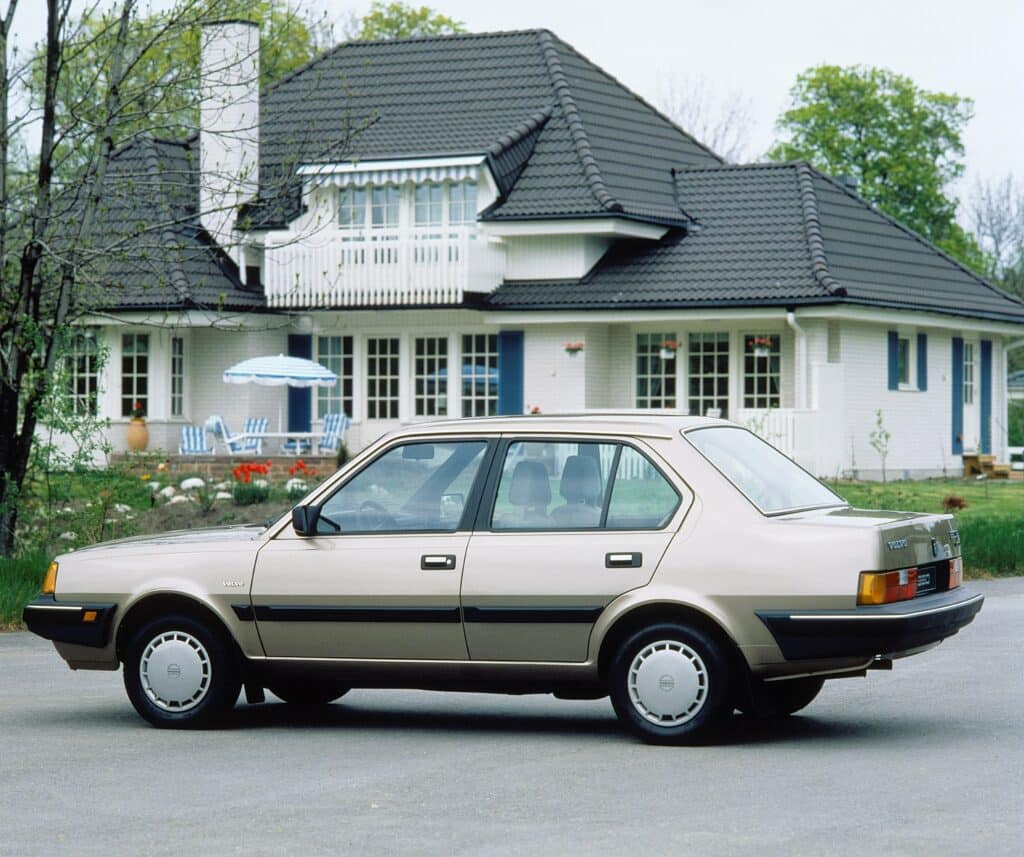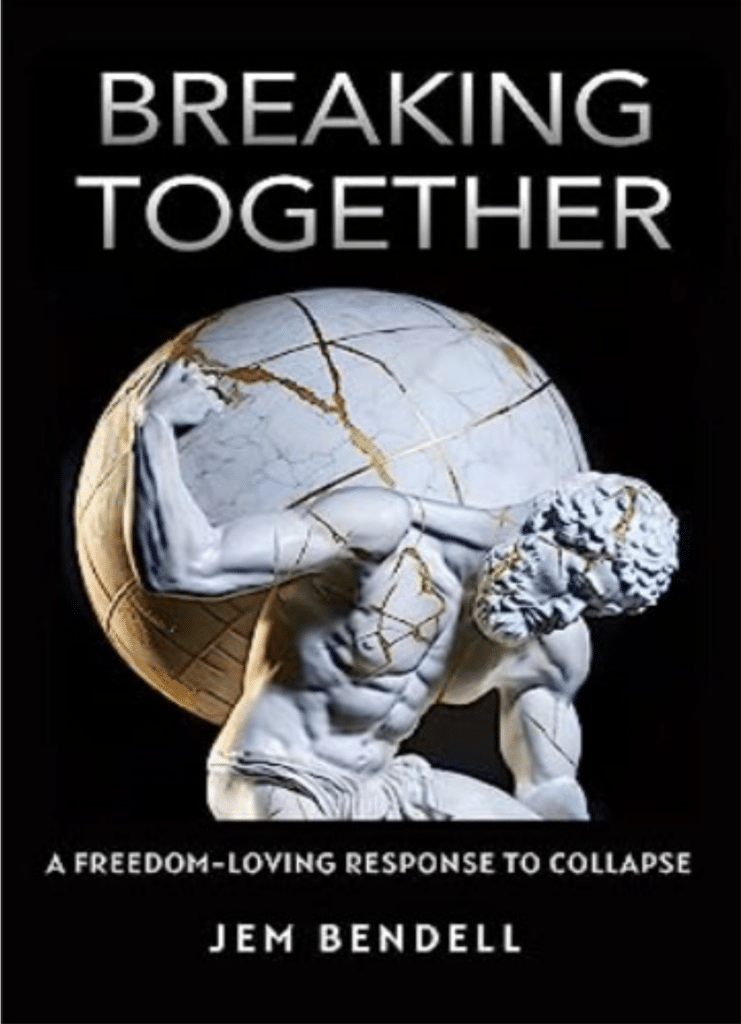Reflections on Jem Bendell: Breaking Together
A few years ago, I came across an article that had become widely known despite never having been published in an academic journal. The Deep Adaptation (2018) was written by a CSR professor, who had concluded, that all that he had worked for the past decades as a sustainability expert was futile, because there was no longer anything we could do to stop the climate change driven societal collapse. His paper, while never published in an academic journal (the reasons of which are detailed in the viral version of the paper), resulted in the creation of a community, spearheaded by Bendell, exploring ways to come to terms with this vision of the near future.
Breaking Together (free ebook available, if you want to take a look) was written by Bendell supported by an interdisciplinary team of researchers in 2023, and in it, he explores the original insights and conclusions of the 2018 paper, and expands on the theme based on most recent research and the discussions, reactions and reflections that the original paper spawned. The conclusion is even more dire: in the paper Bendell gave our society ten years, whereas the book claims that the collapse is already underway.
Despite its 567 pages (in print), I gobbled up the excellently written book in a couple of sittings, and have been thinking about it since. As a sustainability researcher, what should I think about the book and its message?
What does The End look like?
How does an apocalypse look like? Zombies, tsunamis, explosions, skeletons and gunfire, like we’ve seen in the movies? After reading Jem Bendell’s book about collapsing society, I thought of my grandmother’s old Volvo.
She bought it new and shiny, proud of having been able to afford a quality car featuring the latest technological advances of the time: central locking, heating and air conditioning, cassette-player and the like. It was the last car my grandmother ever drove, and the first one I drove around after getting my driver’s license, so it was quite memorable. For many reasons.
Until her end, my grandmother believed that she had a good car – after all, it was a Volvo! I saw it differently: the centrally locking doors jammed, heating was haphazard or non-existing, cassette-player might work if it had a good day – all of the novel technological features broke down, one by one. Anything electric might shut down unaccountably – suddenly you had no lights, and due to its too light rear for a back wheel drive, any gravel or ice on the road would make it spin uncontrollably (at least me and my siblings learned to drive on slippery grounds!). On paper, and in my grandmother’s mind, it was a fancy piece of novel machinery, but in reality, it was an uncomfortable and utterly unpredictable death trap (that fortunately killed no-one before its own demise).

Why did I think of the Volvo when reading about the ongoing collapse of our society? The Hollywood movies paint a picture of an apocalypse, which looks like a scene where you are driving down the road in sunny weather with a perfect car, which then just suddenly blows up. In reality, the apocalyptic drive is akin to what we experienced with the Volvo: first one, then another little thing breaks up, but because you don’t need a cassette-player and don’t mind the wind blowing in from the windows stuck half-way down, you continue. When the wind shield wipes go, you figure out a shoestring-and-bubblegum fix, and continue. Little by little the car breaks down around you, but as the breaking down is gradual, and the car keeps moving (with little fixes here and there), you continue, not believing that the car might actually stop one day, exactly because you are so used to its myriad problems – they are not warning signs but features of the car. The end, when it inevitably comes, isn’t then an explosion, but a gradual slowing down, a final cough and silence.
While the apocalypse may yet feature explosions, tsunamis and gunfire (hopefully not zombies though), they are not its triggers or signals, but its results. The process of ending is a gradual crumbling of the underpinnings of the society, and viewed that way, it is very difficult to disagree with the message of the book: we are already living the collapse.
The book review part
In the introduction, professor Bendell promises that the first half of the book focuses on explicating the drivers of the collapse and arguing for the conclusions he reached, and the last half is a more philosophical exploration of ways to move on after having come to terms with the inevitability of the collapse. The first promise is kept, and the discussions integrating evidence from diverse disciplines and data sources is outstanding and definitely the best part of the book, and constitute a self-standing contribution to anyone interested in gaining a big picture of where we are now, and where do the current trajectories lead.
The rest of the book reflects the personal journey professor Bendell has clearly been on since writing the 2018 article. Much of it reads as auto-therapeutic commentary on the feedback he has received and highlights the avenues he has travelled to come to terms with his insights and the reactions their publication has evoked. To me there is a jarring contrast between the rigorous, well-argued and well-documented part of the book explicating the drivers of the collapse, and the sometimes even esoteric musings of the oriental-inspired personal philosophical choices Bendell has turned to.

However, the book is a remarkable feat that would have deserved attention on par with the tomes of Piketty or the integrative insights of Harari and Diamond. Its message though explains the relative lack of wider discussion – despite many of us privately worrying whether it is possible to thwart environmental calamities and the societal collapse in their wake, our ability to function depends on willful ignorance. We don’t really want to see the whole picture.
This unwillingness to accept the true state of the world, including both its ecological and social trajectories, is a theme Bendell acknowledges and treats with respect. Much of the more philosophical discussions reflect his efforts to try to help people stay sane and functional in the face of the looming collapse: messages of care, love, collaboration, commiseration, agency and wellbeing are attempts to console the inconsolable, and even try to sketch concrete steps to help the awakened to move on.
Whether Bendell’s more consoling ideas fall on fruitful ground depends much on the psychology of the recipient. I personally veer away from anything with a whiff of esoterism, so had some problems digesting some of his beliefs, but still appreciate the effort and the way Bendell himself has managed to remain active and functional. After all, if we accept the message this book delivers, we all need to find our personal way to deal with it – hiding under the bed and waiting for the end might seem tempting, and anyone who finds a way to avoid it should be applauded.
So, why did I believe that the world is ending?
In my view, the best part of the book are the first seven chapters, the extensive introduction and the six chapters each focusing on one essential system. The systems through which Bendell traces the state of the world are economic (Chapter 1: Economic collapse: a time of limits and contradictions), monetary (Chapter 2: Monetary collapse: it was made inevitable), energy (Chapter 3: Energy collapse – and problems with net zero), biodiversity or biosphere (Chapter 4: Biosphere collapse – killing our living home), climate (Chapter 5: Climate collapse – cascading failures), food (Chapter 6: Food collapse – six hard trends) and societal structures (Chapter 7: Societal collapse – recognizing reality and cultural decay). While each of these themes is widely represented in academic research with vast amounts of accumulated data and understanding, to my knowledge there are few serious scholarly attempts to discuss all of these systems and their interplay together. It is exactly the bringing together of the trajectories evident in all of these systems that makes the message of this book so credible: while solutions might be found to tackle some of the problems within each system, the amalgamated mess of the systems and their interdependencies is as a whole in free fall.
The sad thing is that to a sustainability researcher, there are few novel insights in any of these chapters: Bendell has not uncovered new research, new data, new cabals, new conspiracies that would surprise the reader, but instead painstakingly grounds his arguments in well-established, uncontroversial and validated findings of existing scientific literature. In other words, we already know everything that Bendell has compiled. The new thing that he has done is to take the next logical step most of us are too afraid to take: he has looked at the data, pooled it, and drawn conclusions. While the rest of us sustainability researchers are stuck with saying “one plus one”, Bendell goes on to conclude “equals two”.
For me, it is exactly this unsurprising and matter-of-fact tracing of the trajectories in each of the discussed systems that is convincing. Only in discussing money-power does Bendell gravitate to statements that may read as believing in conspiracies, but as I am no expert on the issue, I cannot really judge the merits of his arguments. However, the strength of the argumentation does not depend on the exact interpretations of any single theme – for a detail-oriented expert there may be something else to find in any of the theme discussions – but on the weaving together the more important whole.
The same lack of shocks is also what convinced me of the timeline Bendell perceives. The Volvo is still running, but on its last leg despite us having just fixed the windshield wiper. Things will not get better, but neither can we anticipate zombie attacks. We’re living within a crumbling society, and depending on where you are, the nature of the collapse looks different and its impacts on our lives materialize differently and on differing timescales.
So, what now? Bendell’s message is this: when you accept that the society as you know it is already ending, you can use your remaining energy and time on things that are personally meaningful to you and which may make the collapse more tolerable, or at least the future rebuilding more possible. While the collapse is underway, we can still impact its severity, and maybe even more importantly, the state of the world the rebuilders inherit. We can maybe also have an impact on the ideological foundations of that rebuilding – what can we do to ensure that the new world is not built on the same faulty foundations that brought us here?
These thoughts gave me hope, where the oriental musings did not. It’s intriguing to try to imagine what kinds of foundations could underpin a society where we learned from our mistakes, and created something new and better? That’s what I want to spend my remaining time focusing on: I found a new calling. I want to become a collapsologist!
(In my next blog I’ll let you know what that is. Have to find out is myself first…)


